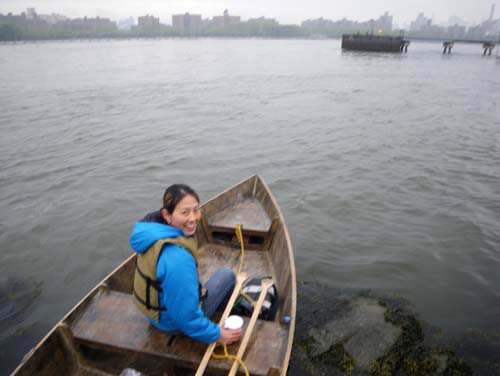
I have always wanted to go out in the Tide and Current Taxi with Yutaka Sho.
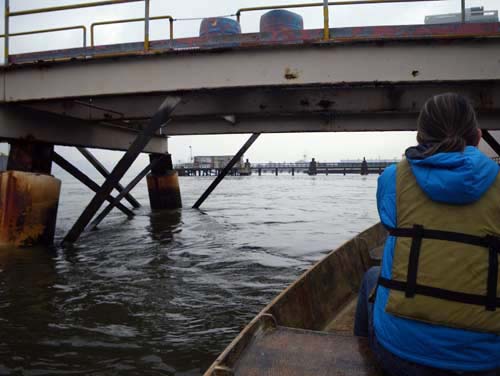
Yutaka was my roommate in college and now she is an architect. I wanted to see what she thought of all the developments along the Brooklyn waterfront that have happened in the last few years.
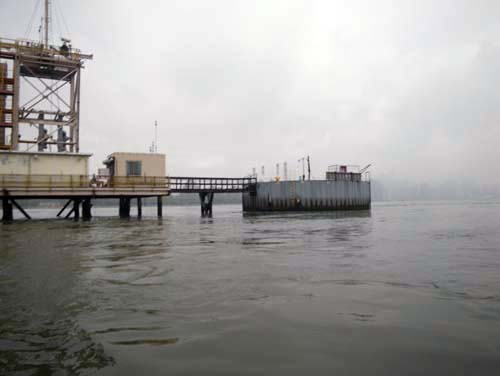
Of all the places that I go in my boat, this area of the East River that has changed the most.
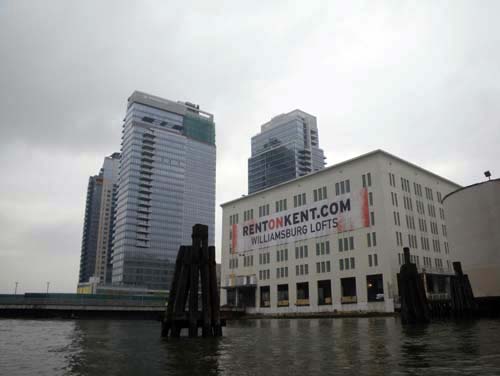
As the tide pulled us North, we came within sight of the “Williamsburg Edge”, a huge new condominium development.
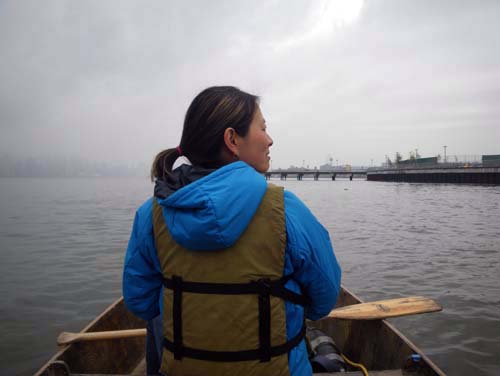
“What do yo think of that?” I asked Yutaka.
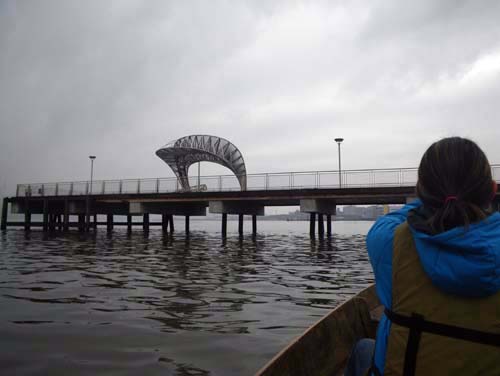
“It is like they have lost hope in humanity.” She said.
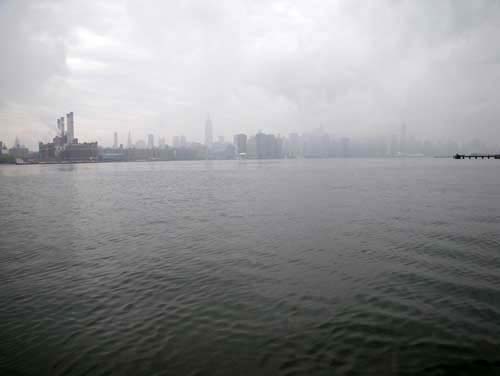
We pulled up on the bank of the new East River State Park and took a look around.
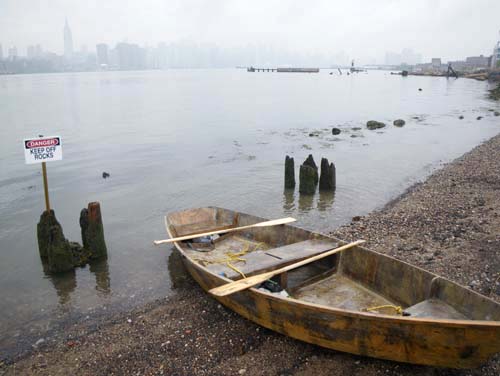
This sign seems to suggest that the rocks are dangerous, but it fairly misses the point. The rocks are not the dangerous part about stepping into the East River- it is the horribly contaminated water.
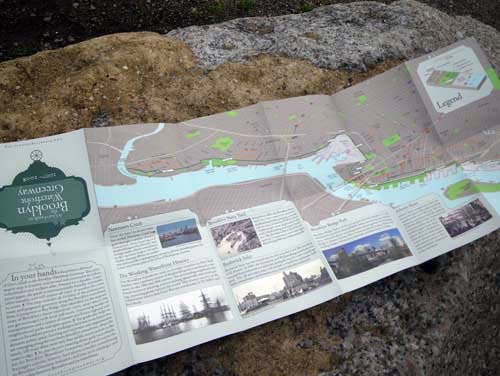
This is all part of a proposed network of parks and paths that will eventually line the Brooklyn waterfront.
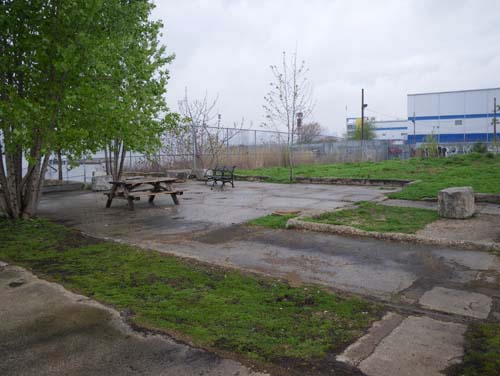
I like how they have left some of the existing structures of the old piers,
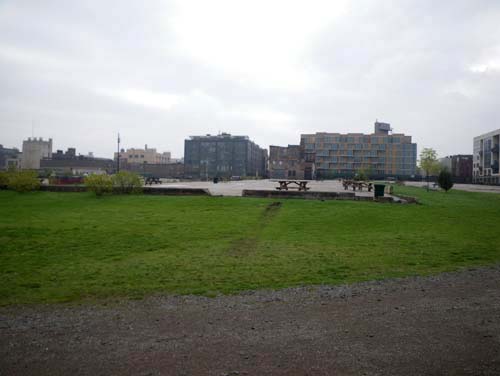
but I have the distinct feeling that this is not the city’s fully realized vision of the East River State Park.
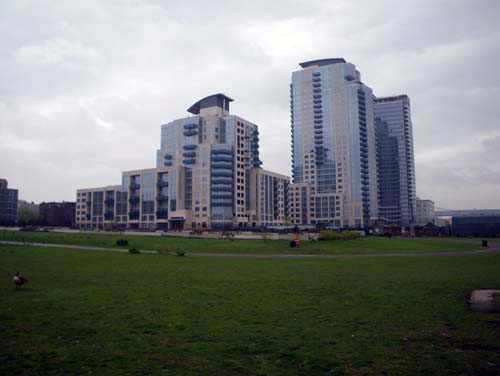
It seems like someone is just waiting for permission to complete a solid wall of condominiums like the ‘Williamsburg Edge”.
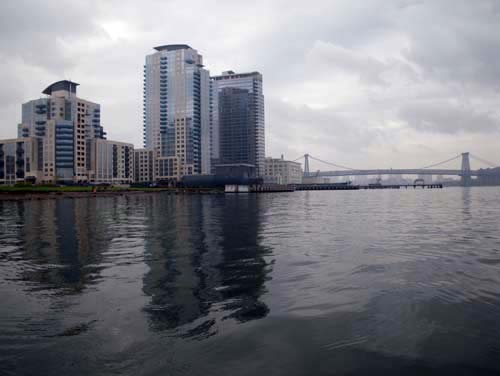
We floated back out into the river.
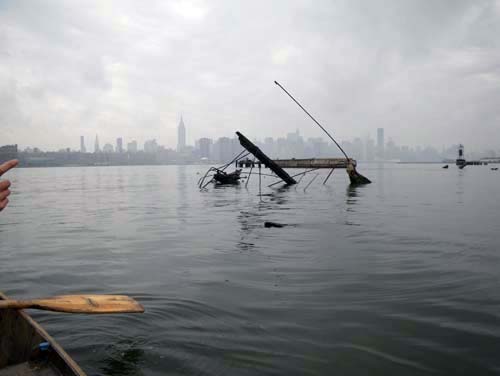
We had another hour or two of North-moving tide and I was hoping to see some of the other parks.
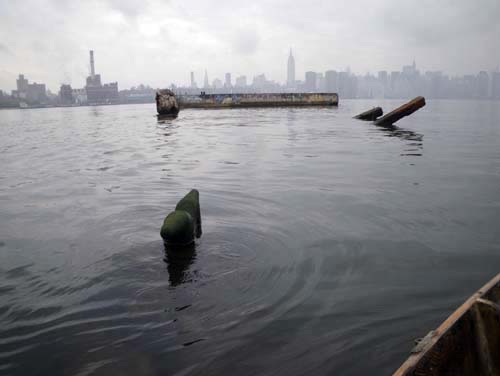
There used to be long cement piers that came out from the shore here, covered with graffiti like that one.
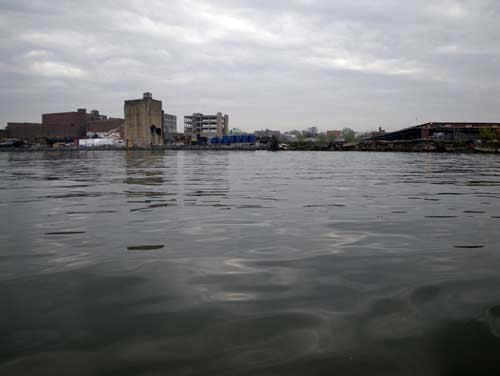
We floated past where the Greenpoint Terminal Market used to stand.
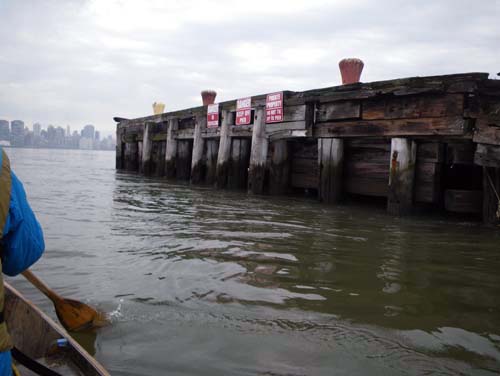
Around the Huron Street Pier we could really see how fast the tide was moving.
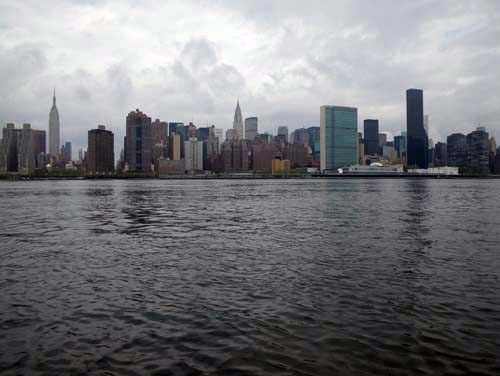
We were still being helped along by a few knots of current in the right direction.
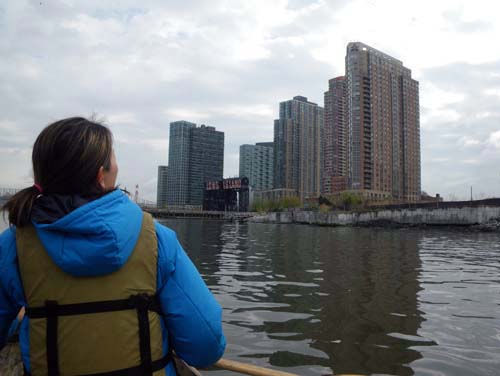
We passed by another big development project in Long Island City.
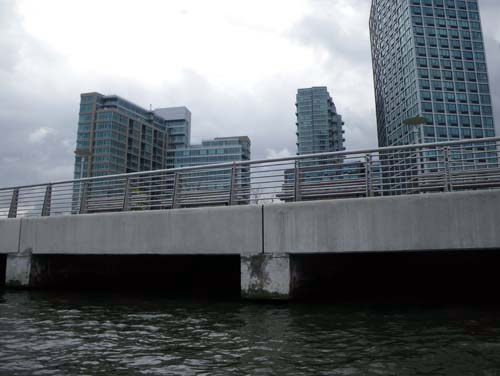
This one seemed to perfectly represent what I think is wrong with waterfront architecture:
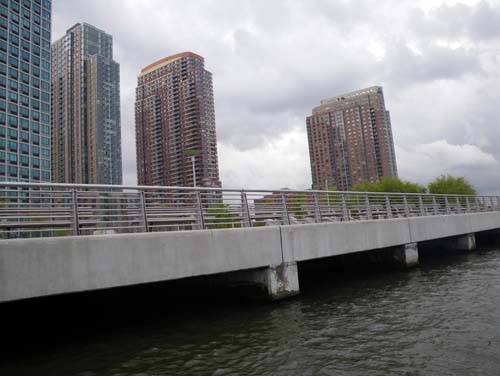
a wall of buildings, a row of benches, then a fence. The message seemed to be that the water is only for looking at.

This dock seemed to be made specifically for pulling up in little boats,
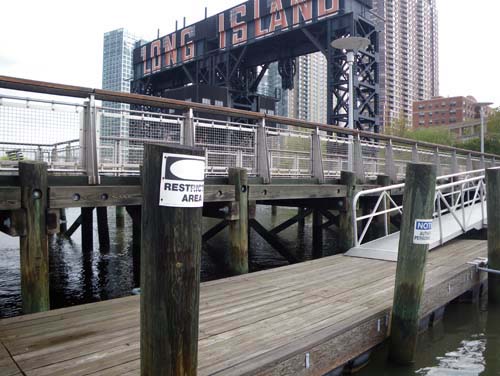
but signs all around said not to.
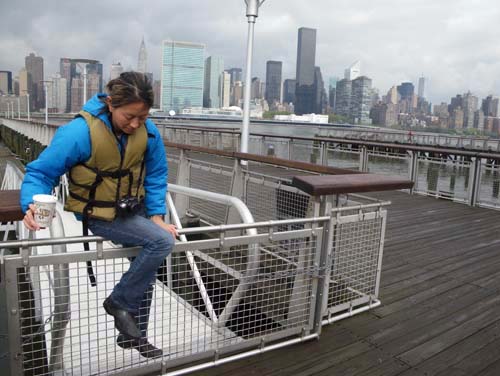
Well, we’ll only be a minute.
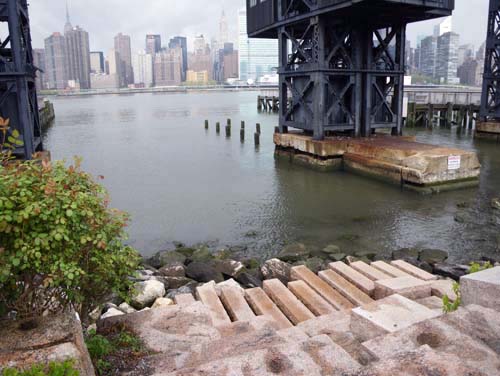
Another inviting architectural feature; pretty stones leading down into the water,
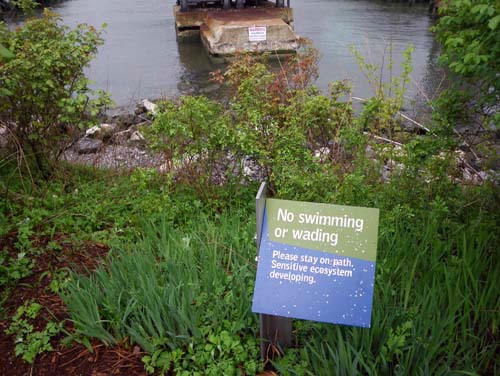
but signs everywhere say, “no swimming”.
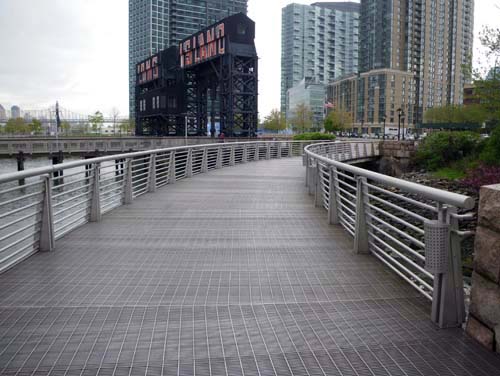
Maybe the architects were planning with a distant future in mind, when the water will be cleaned up,
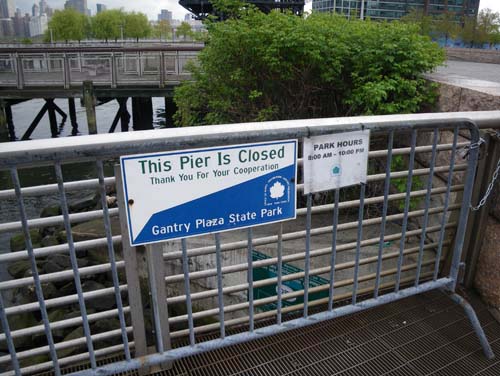
and there won’t need to be so many signs.
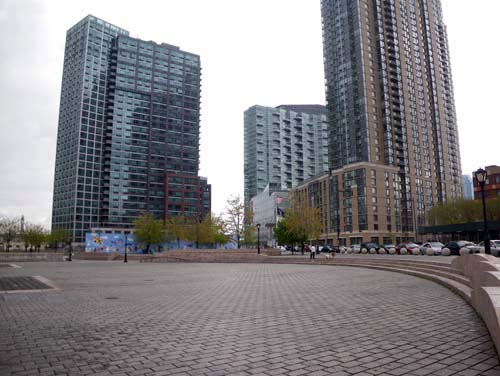
The whole time I kept asking Yutaka what she thought of all this. I wanted an architect to tell me I was right, and that this was bad design.
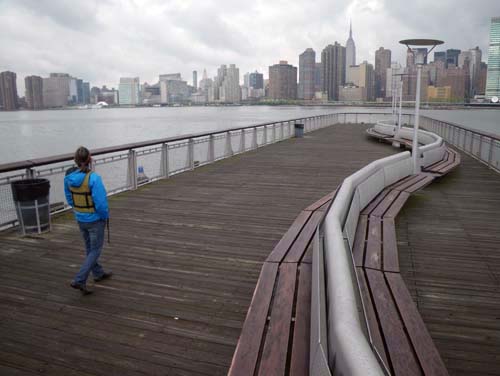
She agreed with me to some extent,
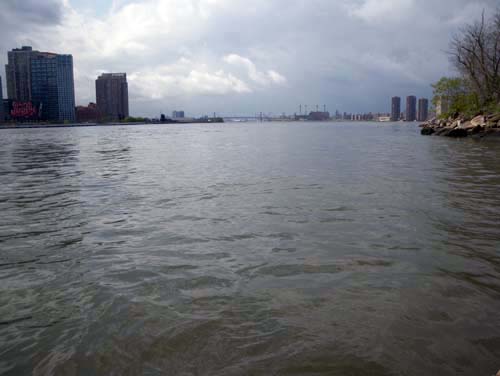
but I realized that these were not the questions most pressing to Yutaka Sho.
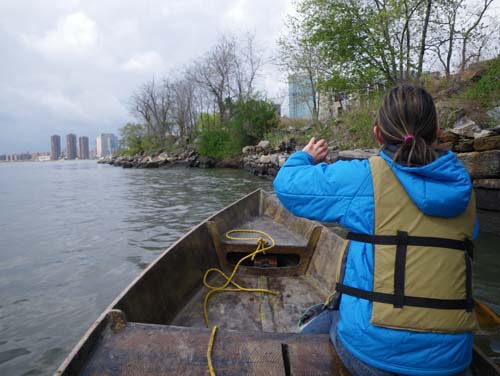
She does most of her work in Uganda and Rwanda, where her NGO connects villages with designers who help develop solutions for better housing.
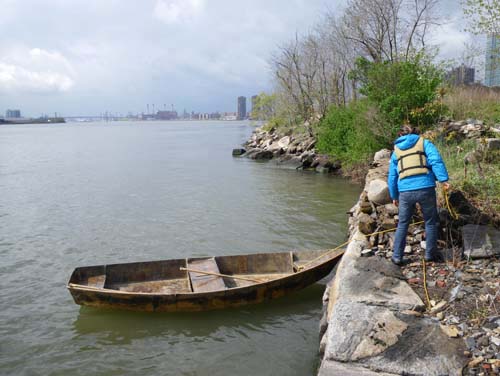
She was interested and seemed to be having a nice time, but critiquing waterfront architecture doesn’t rattle her cage as much as mine.
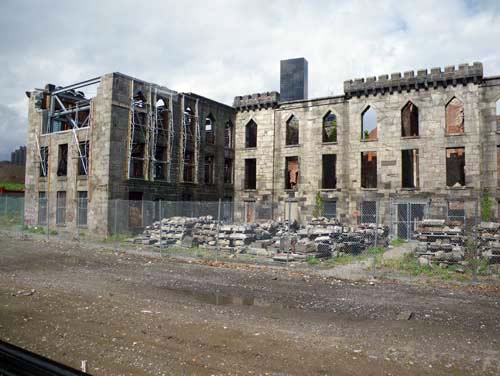
We took a look around the old small pox hospital on Roosevelt Island,

and then floated under the 59th street bridge.
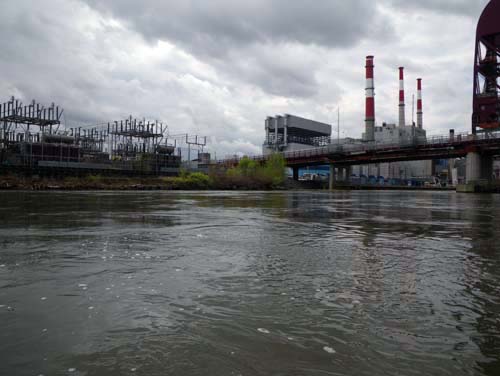
This is the part of the East River where the tide moves most quickly and we talk about the tide turbines that might eventually replace the electric plants like this one.
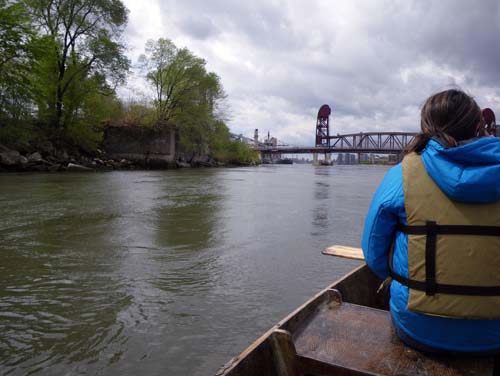
We paddled around the bend,
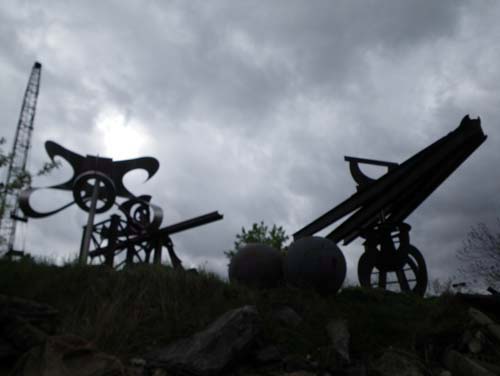
and Socrates Sculpture park floated into view.
↑ Return to Top of Page ↑